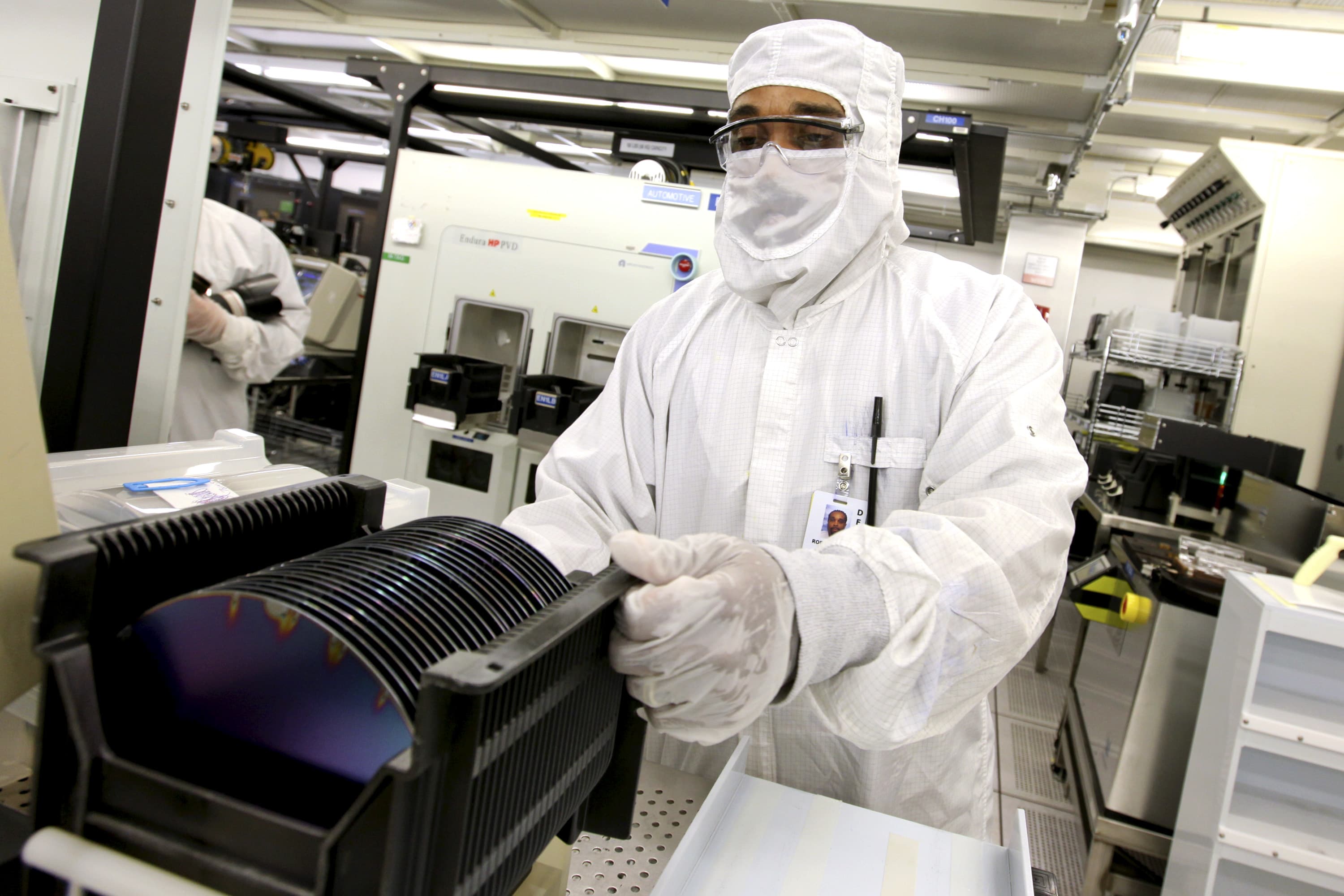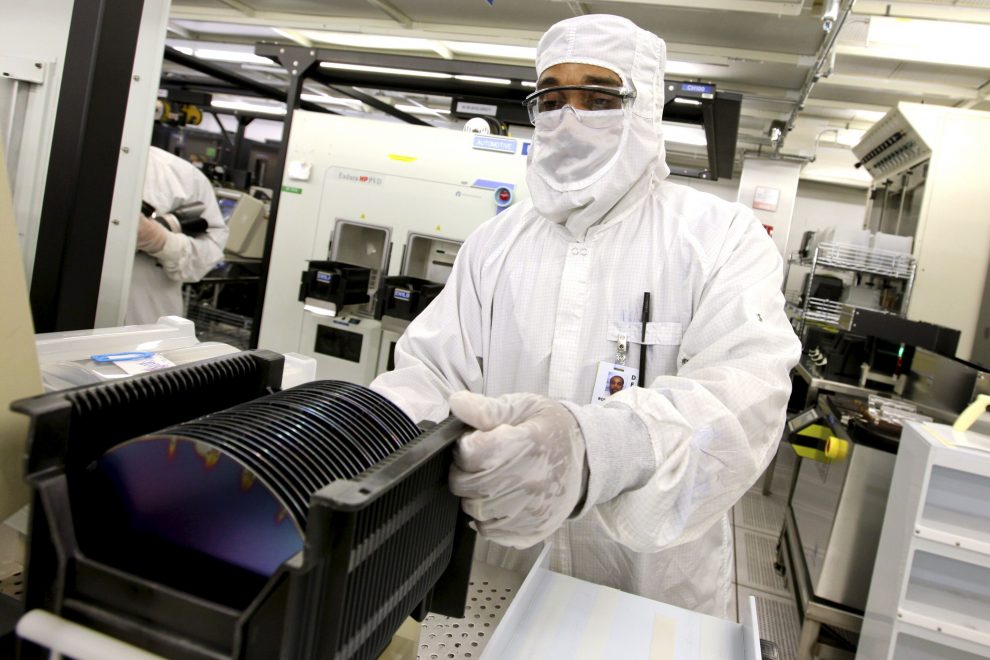
Robert Neely prepares to load a silicon wafer machine in a clean room at the Texas Instruments semiconductor fabrication plant in Dallas, Texas, U.S., on Tuesday, June 16, 2009. Texas Instruments Inc., the second-largest U.S. semiconductor maker, reported sales and profit that beat analysts’ estimates on stronger demand for chips used in mobile phones and communications networks in China. (Photo by Jason Janik/Bloomberg via Getty Images)
Jason Janik | Bloomberg | Getty Images
Texas Instruments provided some relief that a global slowdown in microchip demand would not be as long as feared, posting quarterly profit and revenue that beat Wall Street estimates on Tuesday.
Shares of the company rose 6.4% to $127.70 in extended trading and were on track to open at a record high on Wednesday.
The company had previously warned that the slowdown may last a few more quarters, as China’s economy cools and manufacturers face the fallout of a prolonged U.S.-China trade dispute.
When asked whether the trade dispute was impacting the company’s ability to conduct business in China, Chief Financial Officer Rafael Lizardi said, “No, not at all.”
The market was also encouraged by the numbers from one of the first chipmakers to report earnings for the quarter, as there were uncertainties around demand due to higher tariffs and the fallout from China’s Huawei Technologies.
Texas, whose broad lineup of products makes it a proxy for the chip industry, said it expected third-quarter revenue to be between $3.65 billion and $3.95 billion. The company also estimated a profit of between $1.31 and $1.53 per share.
Analysts on average were expecting revenue of $3.83 billion and profit of $1.38 per share, according to IBES data from Refinitiv.
“Guidance reflects the improved sequential demand due to seasonality in all of its end-markets, offset by the on-going macro uncertainty,” Summit Insights Group analyst Kinngai Chan said.
Chan, however, expressed concerns about the continued choppy demand in industrial and automotive markets due to slowing growth in China.
Sales from industrial and automotive units, its fastest growing areas, together accounted for more than half of the company’s revenue in 2018.
Net income fell to $1.31 billion, or $1.36 per share, in the second quarter ended June 30 from $1.41 billion, or $1.40 per share, a year earlier.
Analysts had expected a profit of $1.22 per share.
Total revenue fell about 9% to $3.67 billion, but beat estimates of $3.6 billion.






